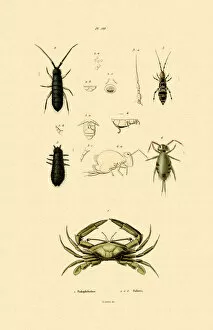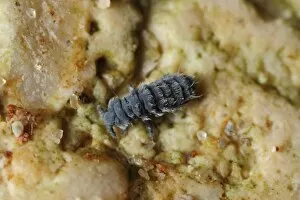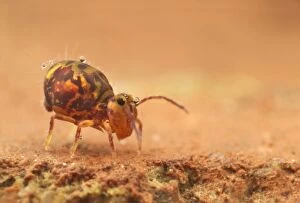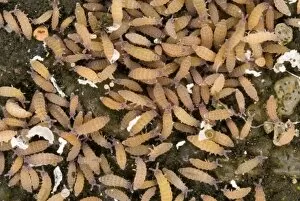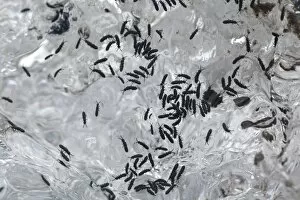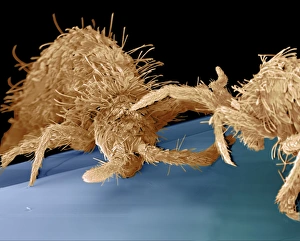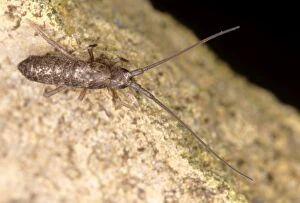Springtails Collection
"Springtails, or Collembolans, are tiny, wingless insects belonging to the order Collembola
All Professionally Made to Order for Quick Shipping
"Springtails, or Collembolans, are tiny, wingless insects belonging to the order Collembola. Depicted in the 1833-39 Sentinel Crab engraving, these microscopic creatures have since been discovered in various habitats, from rocky shores to house bricks and even glaciers. In this collection, observe the Rockpool Springtail (Anurida maritima) in its natural environment on the shore of Portland Harbour, Dorset, England, and the Globular Springtail (Dicyrtomina ornata) resting on a house brick in Leicestershire, England and can known for their distinctive ability to jump great distances using a furcula, or springing organ, located under their abdomen. This defense mechanism is illustrated in the Springtail - defense reaction image. With magnifications up to x150, as seen in the Scanning Electron Micrograph, the intricate details of their exoskeletons and structures are revealed. From the rocky shores of Dorset to the frozen glaciers, Springtails continue to fascinate and surprise us with their resilience and adaptability." (A4 size: 29.

